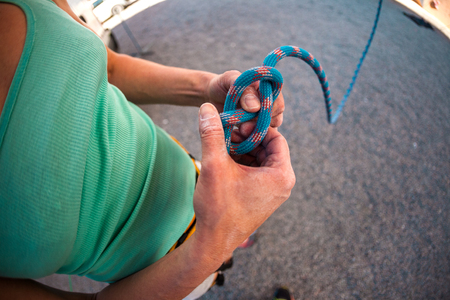Introduction: What Is a Tent Footprint?
When planning a camping trip, you probably spend time picking out the perfect tent, sleeping bag, and maybe even that cute camp mug. But have you heard of a tent footprint? If you’re new to camping or just looking to upgrade your gear, understanding what a tent footprint is—and whether you really need one—can make a big difference in your outdoor experience.
A tent footprint is essentially a thin, durable sheet that goes underneath your tent. Its usually made from tough materials like polyester or nylon and is cut to match the shape of your tent floor. Its main job? To act as a barrier between your tent and the ground, protecting your investment and helping you stay comfortable during your adventures.
Here’s a quick look at what a tent footprint does:
| Purpose | Benefits |
|---|---|
| Protects Tent Floor | Prevents rips, holes, and wear from rocks or sticks |
| Adds Waterproof Layer | Keeps moisture from seeping into your sleeping area |
| Keeps Tent Clean | Makes it easier to pack up without mud or debris sticking to your tent bottom |
For many American campers—whether you’re heading to a national park with family or hiking solo in the backcountry—a tent footprint can be a small addition that makes a big impact. It’s especially handy for those who love exploring rugged trails or want to keep their gear lasting season after season. In U.S. camping culture, where gear durability and comfort matter, footprints are often seen as part of the essentials checklist for both beginners and seasoned outdoor enthusiasts.
2. Benefits of Using a Tent Footprint
If you’re planning a camping trip in the U.S.—whether that’s to a national park, a lakeside campground, or even your local state park—it’s important to think about how to protect your tent and make your outdoor experience more comfortable. A tent footprint, sometimes called a groundsheet, is a simple piece of gear that can make a big difference. Here are some practical reasons why adding a tent footprint to your packing list is worth considering.
Protecting Your Tent Floor
The ground at most American campsites isn’t always soft grass. It can be rocky, full of sticks, or even muddy after rain. Setting up your tent directly on rough surfaces can lead to small tears or abrasions on the tent floor over time. A footprint acts as a protective barrier between your tent and the ground, helping prevent damage from sharp rocks, twigs, and general wear and tear.
Extending the Life of Your Tent
Tents aren’t cheap! With all the adventures you have planned, you want your tent to last season after season. By using a footprint, you reduce direct contact with dirt and moisture—two things that can cause premature aging of your tent material. This extra layer means you’ll spend less time patching holes and more time enjoying the outdoors.
Improving Comfort on Different Terrain
Sleeping directly on uneven or damp ground can make for a restless night. Many popular U.S. campgrounds feature rocky soil or damp forest floors. A footprint helps smooth out bumps and adds a little extra insulation, keeping you drier and more comfortable throughout the night.
Common Terrain Challenges in U.S. Campgrounds
| Terrain Type | How a Footprint Helps |
|---|---|
| Rocky Soil (Grand Canyon, Yosemite) | Prevents abrasions and punctures to tent floor |
| Damp Grass (Great Smoky Mountains) | Adds a waterproof layer to keep moisture out |
| Sandy Sites (Joshua Tree) | Keeps sand from sticking to your tent base |
| Pine Needles & Twigs (Pacific Northwest) | Reduces risk of rips caused by sharp debris |
Easy Cleanup After Camping Trips
A footprint makes packing up much simpler. Instead of rolling up your whole tent covered in mud or pine sap, you just shake off or wipe down the footprint before storing it away. This keeps your actual tent cleaner for next time—especially helpful if you’re camping with kids or pets who track in extra mess.

3. Do You Really Need One? Factors to Consider
When it comes to deciding if you really need a tent footprint, there’s no one-size-fits-all answer. The choice often depends on your camping style, the locations you visit, and your personal preferences. Let’s explore when a tent footprint is truly helpful—and when you might be able to skip it.
When a Tent Footprint Is Worth It
If you’re planning a backpacking trip in the Pacific Northwest, where rain and muddy grounds are common, or setting up camp at a car-accessible site after heavy storms, a tent footprint can make a big difference. In these situations, it acts as an extra layer between your tent floor and wet, abrasive ground—helping to keep you dry and extend the life of your tent.
Situations Where a Tent Footprint Shines:
| Situation | Why a Footprint Helps |
|---|---|
| Backpacking in the Pacific Northwest | Protects from constant moisture, mud, and sharp forest debris |
| Car Camping in Muddy or Rocky Sites | Adds comfort and keeps your tent cleaner and drier |
| Camping on Sandy Beaches or Desert Floors | Keeps sand out of your tent and shields from abrasion |
| Setting Up on Unpredictable Terrain (roots, sticks, gravel) | Prevents punctures and excessive wear on your tent floor |
When You Might Not Need One
If you love ultralight backpacking and count every ounce in your pack, you might decide to leave the footprint at home. Many modern tents have durable floors designed for all but the harshest conditions. If youre camping on soft grass or well-maintained campgrounds during fair weather, skipping the footprint is totally reasonable.
Times When You Can Skip the Footprint:
- Ultralight Backpacking: Every ounce matters; many skip extra layers.
- Camping on Soft Grass: Little risk of abrasion or water seeping in.
- Mild Weather Trips: Dry conditions reduce the need for extra protection.
- Short Overnight Stays: Less wear on your tent means less need for added layers.
Your Decision: What Matters Most?
Choosing whether or not to bring a tent footprint comes down to three main factors:
- Weather Conditions: Wet, muddy, or unpredictable weather makes footprints more useful.
- Terrain Type: Rocky, rough, or debris-filled sites call for extra protection. Smooth grass or sand may not.
- Your Camping Style: If comfort and gear longevity are priorities, consider packing one. If you value speed and minimalism, you might skip it.
The right choice is the one that fits your adventure best—whether that means tossing in an extra layer of protection or going light and simple!
4. Types of Tent Footprints and Alternatives
When it comes to choosing a tent footprint, there’s no one-size-fits-all answer. American campers have several options, from manufacturer-made footprints to creative DIY solutions like Tyvek or painters’ tarps. Let’s break down the most popular choices you’ll see at outdoor stores like REI, Bass Pro Shops, or Walmart, and help you figure out what works best for your camping style.
Manufacturer-Made Footprints
Most major tent brands—think Big Agnes, MSR, Coleman, and The North Face—offer custom-fit footprints designed specifically for their tent models. You’ll usually find these in the same aisle as tents at stores like REI or Dick’s Sporting Goods.
Pros
- Perfect fit: Sized exactly for your tent’s floor, covering all corners but avoiding excess material that can collect rainwater.
- Lightweight and compact: Designed to pack down small with your tent.
- Easy setup: Grommets or clips align with your tent poles for hassle-free pitching.
Cons
- Pricey: Manufacturer footprints can be surprisingly expensive (sometimes $40+).
- Limited versatility: They’re made for one specific tent model—less useful if you swap tents or upgrade.
DIY Options: Tyvek & Painters’ Tarps
If you love a good hack or want to save money, DIY footprints are super popular among American campers. Two favorites are:
- Tyvek: This house wrap material is tough, waterproof, and super lightweight. It’s often sold at hardware stores like Home Depot by the foot.
- Painters’ Tarps (Polyethylene): Inexpensive blue or clear plastic sheets found at Walmart or Lowe’s. Cut them to size for your tent floor.
Pros
- Budget-friendly: Both Tyvek and poly tarps cost much less than branded footprints (often under $15).
- Customizable: Cut them to fit any tent size or shape you own.
- Tough and versatile: Tyvek is known for being almost indestructible; poly tarps work well on rough ground.
Cons
- Noisy: Tyvek can crinkle loudly until it’s broken in after a few uses (pro tip: wash it once to soften).
- Bulkier: Poly tarps may not pack as small as brand-name options.
- No grommets/clips: You might need to add your own holes if you want to stake them down neatly.
Quick Comparison Table
| Manufacturer-Made Footprint | Tyvek DIY Footprint | Painters’ Tarp DIY Footprint | |
|---|---|---|---|
| Fit/Size | Perfect match for tent model | Custom cut to fit any tent | Custom cut to fit any tent |
| Weight/Bulk | Very lightweight & packs small | Ultra-lightweight & packs small after breaking in | A bit bulkier than others |
| Price Range | $30–$60+ | $5–$15 (per yard) | $5–$10 (per tarp) |
| User-Friendliness | Easiest—grommets align with tent stakes/poles | Might require DIY holes/grommets; can be noisy at first | No grommets; may slide around unless staked down carefully |
| Durability/Longevity | Tough but specific to one tent model only | Extremely durable; reusable for many trips/tents | Tough but can puncture/tear eventually; easy to replace cheaply |
| Main Retailers/Brands | REI, Backcountry, Dick’s Sporting Goods (MSR, Big Agnes, The North Face) | Home Depot, Lowe’s (sold as “house wrap”) | Lowe’s, Walmart, Ace Hardware (“painters’ plastic”) |
Selecting the right type of footprint really depends on your budget, how much weight you want to carry, and how much effort you want to put into customizing your gear. Some campers even rotate between options depending on the trip—opting for a lightweight Tyvek sheet on backpacking adventures and a heavier-duty tarp when car camping with family or friends. Whatever you choose, protecting the bottom of your tent is always a smart move for longer-lasting gear and comfier nights outdoors!
5. How to Choose the Right Footprint
Picking the right tent footprint can feel overwhelming, but with a few practical tips, you’ll be ready for any camping adventure. Here’s what to keep in mind to get a perfect fit that protects your tent and makes your outdoor experience more comfortable.
Check the Size: It Matters!
The size of your footprint is super important. A good rule of thumb is that your footprint should match the floor dimensions of your tent—or be just a tiny bit smaller. If it’s too big, it could collect rainwater under your tent, which nobody wants! Here’s a quick comparison:
| Footprint Size | Pros | Cons |
|---|---|---|
| Same as tent floor | Full protection, easy setup | May stick out if not placed carefully |
| Slightly smaller | No water collection risk, best fit | Edges of tent floor may touch ground |
| Larger than tent floor | Covers more area, can double as a tarp | Can collect rainwater under tent—avoid this! |
Material Matters: Pick What Works For You
Tent footprints come in different materials. Your choice depends on how and where you camp:
| Material Type | Best For | Durability |
|---|---|---|
| Polyethylene (PE) | Budget-friendly, car camping | Very durable, heavier |
| Nylon/Polyester (with PU or silicone coating) | Backpacking, lightweight trips | Moderate durability, very lightweight |
| Diy Tyvek/Plastic Sheet | Ultralight hikers, custom sizes | Varies—Tyvek is sturdy, plastic less so |
Tips to Get the Best Fit and Functionality
- Test at Home: Lay out your tent and footprint before heading out. Make sure no part of the footprint sticks out from under your tent floor.
- Corners Count: Check that the grommets or loops on the footprint line up with your tent poles or stakes for easy setup.
- If Cutting Your Own: Use scissors to trim a DIY footprint so it’s about 1-2 inches smaller than your tent floor all around.
- Avoid Water Traps: Always tuck in any edges that might poke out once your tent is set up—this keeps rain from pooling underneath.
- Packing Tip: Roll or fold the footprint separately from your tent to keep everything clean and organized.
Your Footprint, Your Adventure!
The right footprint keeps your tent dry and cozy while extending its life. Match the size and material to your personal camping style and you’ll be ready for whatever Mother Nature brings your way.
6. Caring for and Using Your Footprint
Taking care of your tent footprint isn’t just about making it last longer—it’s also about protecting the places you love to camp. Here are some friendly, practical tips to help you get the most out of your gear while respecting Leave No Trace principles.
Setting Up Your Footprint
Before you lay down your footprint, take a few minutes to prep your campsite. This helps keep your gear in good shape and prevents unnecessary wear.
| Step | What to Do | Why It Matters |
|---|---|---|
| Clear Debris | Brush away sharp rocks, pinecones, and sticks from your tent area. | Avoids tears or punctures in your footprint and tent floor. |
| Choose Level Ground | Select a flat spot that won’t collect water if it rains. | Keeps you dry and comfortable all night. |
| Align Correctly | Match the shape of your footprint to your tent’s floor plan. | Covers high-wear areas and avoids sticking out (which can funnel rainwater under your tent). |
| Stake Down If Needed | If it’s windy, use small stakes at corners or weigh down with gear. | Keeps the footprint from shifting during setup or storms. |
Cleaning Your Footprint
After every trip—or even during longer adventures—give your footprint a quick clean. This helps prevent mold, odors, and premature wear.
- Shake Off Dirt: After packing up, shake out loose dirt and debris before folding.
- Spot Clean: Use a damp cloth or sponge to wipe off mud or sticky messes. Skip harsh detergents—they can damage waterproof coatings.
- Deep Clean: For stubborn grime, rinse with cool water and mild soap at home. Hang dry completely before storing.
Storing Your Footprint
Caring for your gear at home is just as important as in the wild. Good storage keeps your footprint fresh and ready for your next adventure!
- Dry Thoroughly: Never pack away a wet or damp footprint—it can grow mildew fast! Let it air dry fully before rolling or folding.
- Avoid Tight Compression: Store loosely in a breathable bag instead of cramming into tiny stuff sacks. This protects waterproof coatings from breaking down over time.
- Keep It Accessible: Store near your other camping essentials so you don’t forget it on your next trip!
Leave No Trace Tips for Using Footprints
- Avoid Damaging Vegetation: Only set up on durable surfaces like dirt or gravel when possible, not fragile plants or mosses.
- Packing Out Trash: Always check under your footprint for leftover trash or micro-litter before leaving camp.
- No Permanent Impact: Don’t trench around tents; rely on proper site selection and well-placed footprints instead.
Your Turn: Happy Camping!
Treating your tent footprint with care means more comfort for you—and healthier wild places for everyone. With these easy steps, you’ll help ensure each camping trip is safe, clean, and kind to nature!


